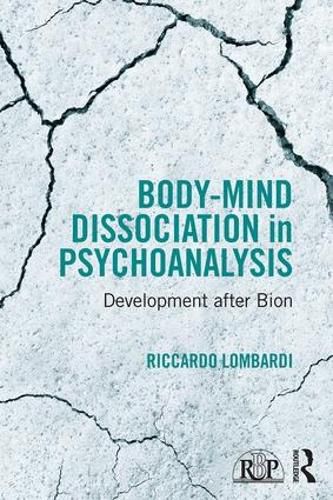Readings Newsletter
Become a Readings Member to make your shopping experience even easier.
Sign in or sign up for free!
You’re not far away from qualifying for FREE standard shipping within Australia
You’ve qualified for FREE standard shipping within Australia
The cart is loading…






The conflict and dissociation between the Body and the Mind have determinant implications in the context of our current clinical practice, and are an important source of internal and relational disturbances. Body-Mind Dissociation in Psychoanalysis proposes the concept as a new hypothesis, different from traumatic dissociation or states of splitting.
This approach opens the door to a clinical confrontation with extreme forms of mental disturbance, such as psychosis or borderline disorders, and strengthens the relational power of the analytic encounter, through a focus on the internal sensory/emotional axis in both analyst and analysand. The book details this importance of the analyst’s intrasubjective relationship with the analysand in constructing new developmental horizons, starting from the body-mind exchange of the two participants.
Body-Mind Dissociation in Psychoanalysis will be of use to students, beginners in psychotherapy, mental health practitioners and seasoned psychoanalysts.
$9.00 standard shipping within Australia
FREE standard shipping within Australia for orders over $100.00
Express & International shipping calculated at checkout
Stock availability can be subject to change without notice. We recommend calling the shop or contacting our online team to check availability of low stock items. Please see our Shopping Online page for more details.
The conflict and dissociation between the Body and the Mind have determinant implications in the context of our current clinical practice, and are an important source of internal and relational disturbances. Body-Mind Dissociation in Psychoanalysis proposes the concept as a new hypothesis, different from traumatic dissociation or states of splitting.
This approach opens the door to a clinical confrontation with extreme forms of mental disturbance, such as psychosis or borderline disorders, and strengthens the relational power of the analytic encounter, through a focus on the internal sensory/emotional axis in both analyst and analysand. The book details this importance of the analyst’s intrasubjective relationship with the analysand in constructing new developmental horizons, starting from the body-mind exchange of the two participants.
Body-Mind Dissociation in Psychoanalysis will be of use to students, beginners in psychotherapy, mental health practitioners and seasoned psychoanalysts.